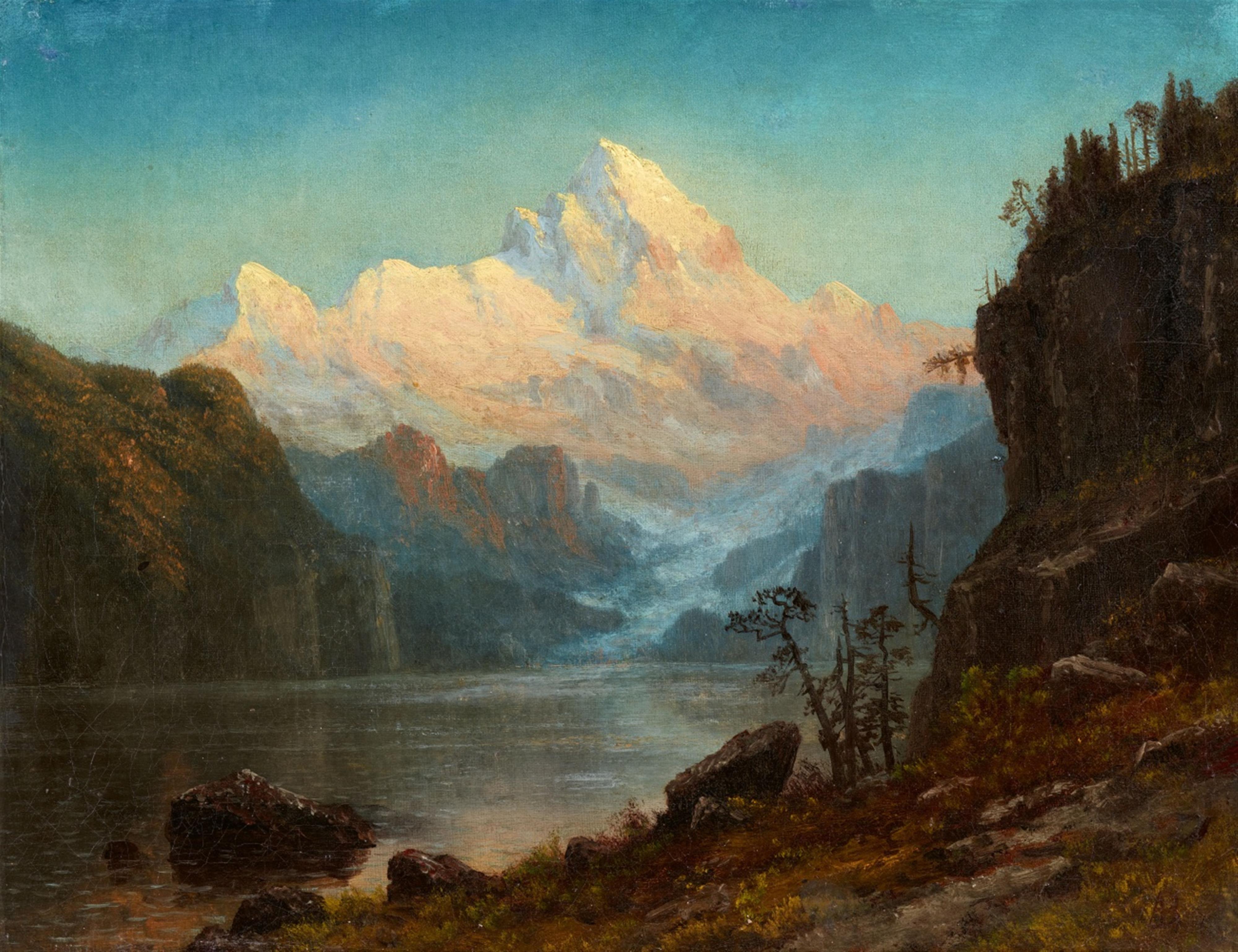Albert Bierstadt
American Mountain Landscape
Oil on canvas. 36.5 x 28 cm.
Monogrammed lower right: AB (conjoined).
Inscribed to the reverse: A. Bierstadt. See Tahoe in Amerika.
Albert Bierstadt emigrated to America with his parents in 1833 when he was two years old. He returned to Germany aged 20 to apprentice under his mother's cousin, the painter Johann Peter Hasenclever. However when he arrived, he found that Hasenclever had already passed away, so he instead enrolled as a pupil at the Düsseldorf Academy, where he was taught by Carl Friedrich Lessing and Andreas Achenbach.
Bierstadt returned to the United States in 1857. By then an accomplished landscape painter, he took part on his first official expedition to the West of the continent two years later. He was enthralled by the magnificent mountain landscapes, lakes, rivers, and snow-capped peaks, capturing them in his first great landscape paintings which were an immediate success. Bierstadt undertook a second journey to the west in 1863 during which he visited the Rocky Mountains, Yosemite Valley and Columbia River.
He made numerous small sketches whilst he was there, which he later used as the basis for the large paintings carried out in his studio. Although the works almost always depict a landscape which the artist actually saw, none of them are true to life and instead the components are rearranged to create a more Romantic image.
The present small-scale image is characteristic of his oeuvre, depicting the last rays of the evening sun upon a white mountain peak as twilight sets in over the shadowy banks of the calm mountain lake. Bierstadt was more concerned with depicting atmosphere than with topographical accuracy.
Despite his initial success, Bierstadt's works grew less sought after towards the end of his life, and he died impoverished in New York in 1902. His works were only rediscovered in the 1960s when he came to be regarded as one of the most important artists of the so-called Hudson River School. Alongside monumental canvasses, the artist also produced numerous works like this in a smaller format.
Provenance
South German private ownership.

